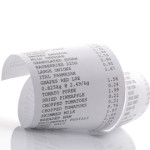There Are More Options for Weight Loss Success than Just Dieting or Surgery!
Introducing the intragastric balloon weight loss program that can help you lose thirty or more pounds in six months without surgery, diet pills, or a special diet.
Since the mid-1990s, the intragastric balloon has been available in forty countries around the world to help people lose weight. The system became available in Canada and Australia in 2009 and is expected to be approved by the FDA for use in the United States in May 2015.
How Does an Orbera Intragastric Balloon Promote Weight Loss?
Diets rely on reducing the amount of food you eat by helping you moderate serving size and choosing foods that help you feel full. As most people who have dieted know, diets are difficult to stick with because you spend a good deal of time feeling hungry. What’s worse is that when the diet is over, the lost weight usually returns.
To combat the problem of feeling hungry, surgical weight loss procedures physically reduce the size of the stomach to help patients achieve feelings of fullness with a smaller amount of food. Surgery is an excellent choice for people who are obese and have large amounts of weight to lose. Two of the possible drawbacks of surgery are that these procedures are usually permanent, and if you are fewer than fifty pounds overweight, you rarely qualify for weight loss surgery.
An intragastric balloon combats hunger by using a space-occupying silicone balloon inserted into the stomach during an outpatient endoscopy procedure. In this procedure, while you are sedated a tube is passed through your mouth to place the balloon in your stomach. No incisions or sutures are involved. The balloon is left in your stomach for six months and then removed.
The Orbera intragastric balloon reduces the stomach’s capacity. Your stomach stretches, signaling that you are full—but with a smaller than normal amount of food. You experience less hunger, giving your weight loss efforts a considerable boost.
Long Term Weight Loss with Orbera Intragastric Balloon
Long term weight management success requires more than just help to lose weight. As with diets or surgery, the Orbera intragastric balloon is the first step in a longer process of developing new eating and activity habits with the help of your weight loss support team. During the six months that the balloon is in place, you will learn skills to help you make appropriate meal choices, control portion sizes, and adapt your relationship with food to a healthier one.
When the intragastric balloon is removed after six months, you will continue to work with your weight loss support team to further reinforce healthy lifestyle and eating habits to help you achieve long-term weight loss success.
Who Is a Candidate for the Orbera Intragastric Balloon?
Once approved, the intragastric balloon is expected to be available to people with a BMI above thirty. If you have tried many diets without success because of the challenges of feeling hungry or difficulty following dietary requirements, the intragastric balloon may be a good choice for you. To be successful, you will have to commit to attending education sessions and following a restricted calorie diet. We believe the Orbera intragastric balloon is a wonderful option for people wishing to lose weight quickly without an invasive surgical procedure and without feelings of hunger.

